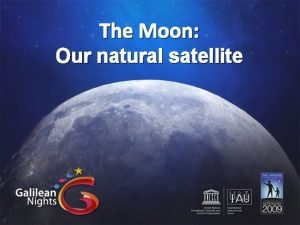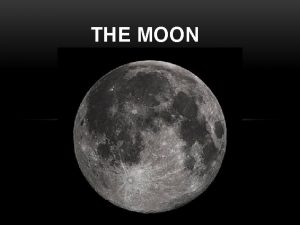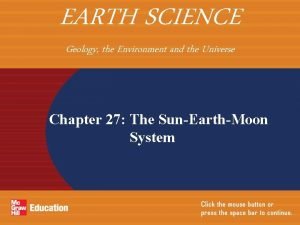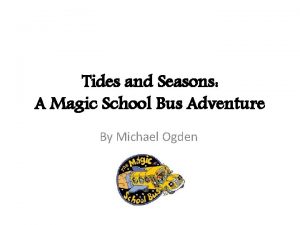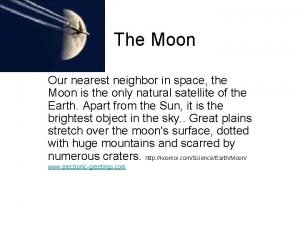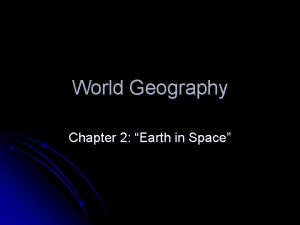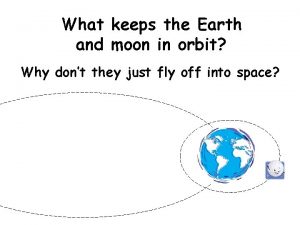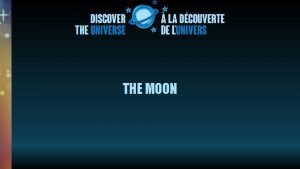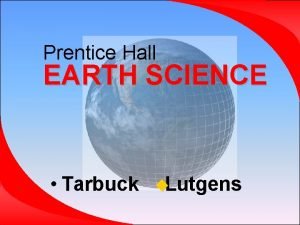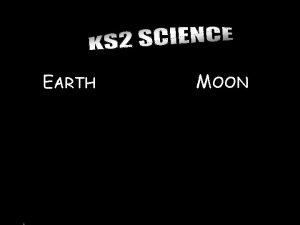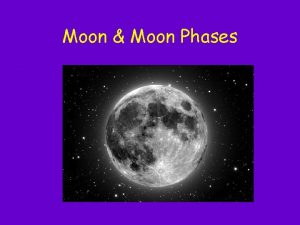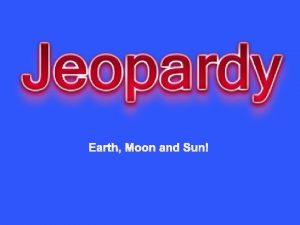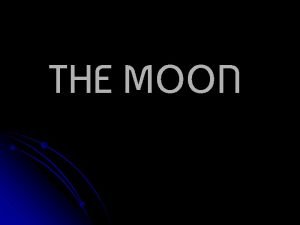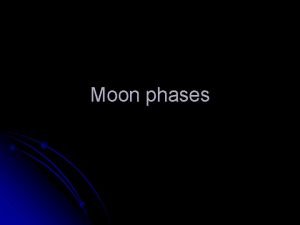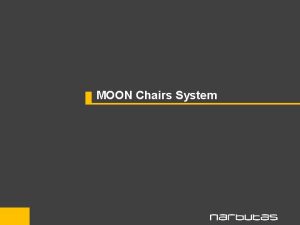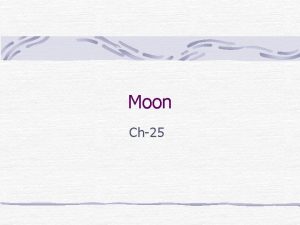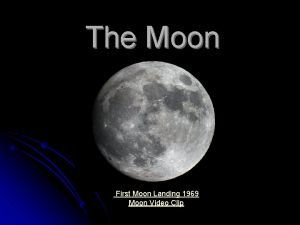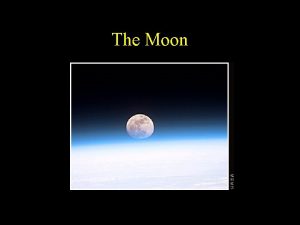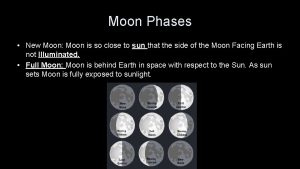Chapter 12 1 Earth in space Earth Moon














- Slides: 14

+ Chapter 12. 1: Earth in space Earth, Moon & Sun

+ Standards n 8. 4. e. Students know the appearance, composition, relative position and size, and motion of objects in the solar system, including planets, planetary satellites, comets, and asteroids.

+ Astronomy n. The study of the moon, stars, and other objects in space is called astronomy.

+ How the earth moves n. Earth moves through space in two major ways: rotation and revolution.

+ Rotation v. Revolution n. Rotation: The spinning of the earth on its axis n. Axis: imaginary line through the North and South Poles

+ Rotation v. Revolution n Revolution: movement of one object around another n Orbit: Earth follows a path as it revolves around the sun. It is a slightly elongated circle, or an ellipse.

+ Calendars n. Calendar: system of organizing time that defines the beginning, length, and divisions of the year. n. Egyptian: discovered there were 365 days in a year n Had 12 months with 30 days each, and 5 days left over n. Romans: borrowed Egyptian calendar, but added the leap year.

+ Seasons n. How n. Hits sunlight hits earth right at the equator n. Earth has seasons because its axis is tilted as it revolves around the sun

+ Seasons Picture

+ Seasons n Earth in June n Northern hemisphere: hot n Tilting towards the sun n Southern hemisphere: cold n Earth in December n Northern Hemisphere: cold n Southern hemisphere: hot n Tilting towards the sun

+ Solstices n. Solstice: day when the sun is farthest north or south of the equator n. Here: Summer Solstice is the longest day, Winter Solstice is the shortest day of the year

+ Seasons Picture

+ Equinoxes n. Halfway between solstices, we have equinoxes. n. Equinox n. Spring = “equal night” and Fall equinoxes mean that the day is as long as the night

+ Seasons Picture
 The science duo
The science duo Which moon phase occurs directly before a new moon
Which moon phase occurs directly before a new moon Moon sister moon calendar
Moon sister moon calendar Home.hiwaay.net/ krcool/astro/moon/moon tides/
Home.hiwaay.net/ krcool/astro/moon/moon tides/ How many days for a moon cycle
How many days for a moon cycle Chapter 27 study guide the sun-earth-moon system
Chapter 27 study guide the sun-earth-moon system Http://space-facts.com/the-moon/
Http://space-facts.com/the-moon/ Why do we only see one side of the moon
Why do we only see one side of the moon Chapter 2 the earth in space answers
Chapter 2 the earth in space answers Moonfall msv
Moonfall msv Does the moon rotate
Does the moon rotate How the sun moon and earth work together
How the sun moon and earth work together 22.3 earth's moon
22.3 earth's moon Lesson outline lesson 3 eclipses and tides answer key
Lesson outline lesson 3 eclipses and tides answer key How big is the moon compared to the earth
How big is the moon compared to the earth


